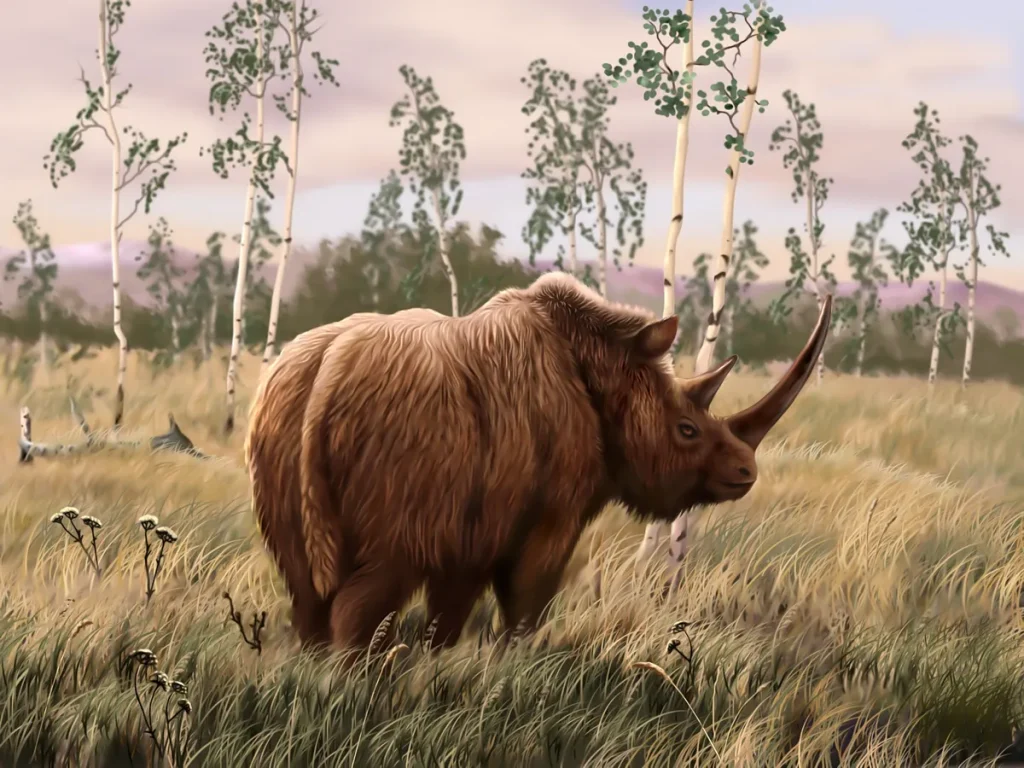A juvenile woolly rhinoceros dating back 32,400 years has been unearthed in the frozen permafrost near the Tirekhtyakh River in Russia’s Sakha Republic.
Dubbed the ‘Abyisky rhinoceros’ after the district of its discovery, this remarkably well-preserved specimen offers new insights into the mysterious Ice Age species.

Image credit: Ozja/Shutterstock.com
Despite its ancient age, much of the rhino’s soft tissues, skin, and wool remained intact, preserved by sub-zero temperatures.
This exceptional preservation allowed scientists to study its anatomy in unprecedented detail.
The research team, led by Gennady Boeskorov from the Diamond and Precious Metals Geology Institute, Siberian Branch of the Russian Academy of Sciences, discovered that the juvenile rhino was likely not more than 4.5 years old at the time of its death.
The wool of the young rhino was short and light-colored, fitting the description of a juvenile and differing significantly from the thick, dark hair seen in older woolly rhinoceroses.
In the wool, researchers found evidence of tiny parasitic crustaceans known as water fleas, which do not exist in the region today, adding another layer of intrigue to the study.
One of the most fascinating finds was the identification of a fatty hump on the rhino’s back, an anatomical feature previously undocumented in woolly rhinos.
This discovery aligns with similar fatty deposits found in other Ice Age giants like woolly mammoths, suggesting that these humps might have helped the animals store energy or insulate against the freezing climates.
The woolly rhinoceros (Coelodonta antiquitatis) once roamed the northern regions of Eurasia, particularly Siberia, from about 3.6 million years ago until their extinction around 10,000 years ago.
Although they were prevalent during their time, only six preserved woolly rhino specimens have been unearthed in the Sakha Republic since the late 18th century.
The latest specimen was found a few months ago in the Oymyakonsky District, showcasing the rarity and exceptional value of these discoveries.
Other frozen permafrost discoveries in the region include mammoths, wolves, cave lions, and even birds.
As global temperatures rise due to climate change, more such specimens might be revealed.
However, time is critical; once these ancient remains are exposed to the elements, they degrade quickly, becoming unfit for scientific research.
The entire study has been published in the journal Doklady Earth Sciences. With rising concerns over climate change, these findings not only provide a window into our planet’s past but also underscore the urgency of preserving these delicate specimens.
